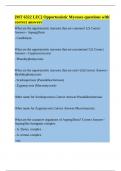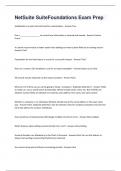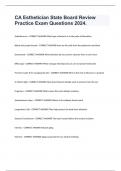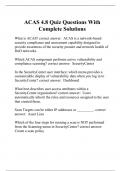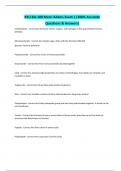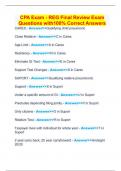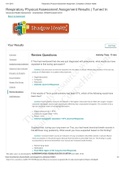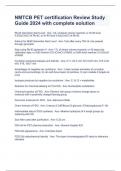Exam (elaborations)
[MT 6322 LEC] Opportunistic Mycoses questions with correct answers
- Module
- Institution
What are the opportunistic mycoses that are common? (2) Correct Answer-- Aspergillosis - Candidiasis What are the opportunistic mycoses that are uncommon? (2) Correct Answer-- Cryptocococcosis - Phaeohyphomycosis What are the opportunistic mycoses that are rare? (3)) Correct Answer-- Hyaloh...
[Show more]
